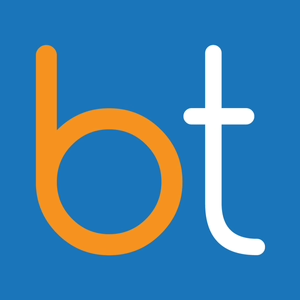
BackTable Vascular & Interventional
BackTable

1 Creator

1 Creator


2 Listeners
All episodes
Best episodes
Top 10 BackTable Vascular & Interventional Episodes
Goodpods has curated a list of the 10 best BackTable Vascular & Interventional episodes, ranked by the number of listens and likes each episode have garnered from our listeners. If you are listening to BackTable Vascular & Interventional for the first time, there's no better place to start than with one of these standout episodes. If you are a fan of the show, vote for your favorite BackTable Vascular & Interventional episode by adding your comments to the episode page.
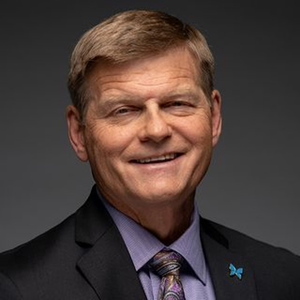
Ep. 155 The Butterfly Story: An Interview with Dr. John Martin
BackTable Vascular & Interventional
09/20/21 • 56 min
We talk with Vascular Surgeon John Martin about his entrepreneurial journey to becoming CMO of Butterfly Network, Inc., and their mission to revolutionize medical imaging and medical education.
---
CHECK OUT OUR SPONSOR
Medtronic AV DCB
https://www.medtronic.com/avdcb
---
SHOW NOTES
In this installment of the BackTable Innovation Series, Dr. John Martin, Chief Medical Officer of Butterfly Network, and our host Dr. Bryan Hartley discuss Dr. Martin’s work in clinical software development, nonprofit efforts, and the revolutionary Ultrasound-on-Chip technology.
Dr. Martin traces his entrepreneurial journey back to his vascular surgery fellowship years, when he developed software programs to automate risk stratification and track patient outcomes. He emphasizes that it is important to take risks and “bet on yourself” when you know that your product can bring benefits to patients and physicians.
Dr. Martin also advises listeners to be open to partnerships with larger companies who can bring their ideas to fruition. This collaborative mindset brought him into the nonprofit world, where he worked with industry and government leaders to found a free cardiovascular screening initiative called Dare to CARE.
In his current role at Butterfly Network, Dr. Martin aims to make bedside ultrasound care affordable and accessible to all patients across the globe. He highlights the fact that the portable Butterfly probe has been successfully employed in contexts such as medical education, the COVID response, and his own cancer diagnosis. Overall, Dr. Martin believes that ultrasound access will benefit all medical specialties and help physicians make more efficient and informed clinical decisions.
---
RESOURCES
The Butterfly Network: https://www.butterflynetwork.com/
Dare to CARE: http://www.daretocare.us/

1 Listener

Ep. 49 Collaboration in the Hybrid OR with Dr. Racadio and Dr. von Allmen
BackTable Vascular & Interventional
09/30/19 • 29 min
Reflect on how this Podcast applies to your day-to-day and earn AMA PRA Category 1 CMEs here: https://earnc.me/Ucy8jI
Director of IR Innovation Dr. John Racadio and Pediatric Surgeon-in-Chief Dr. Daniel von Allmen of Cincinnati Children’s Hospital discuss their experiences in the Hybrid OR, how they built it, and how cross-specialty collaboration with pulmonary, urology, and orthopedic surgeons has greatly improved patient care.

1 Listener
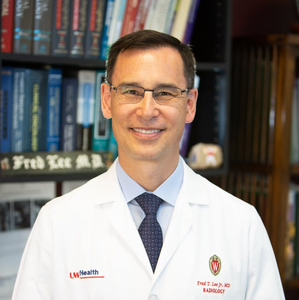
Ep. 157 Lung Biopsies Part II: Pleural and Parenchymal Blood Patching with Dr. Fred Lee
BackTable Vascular & Interventional
09/28/21 • 44 min
In Part II of our Lung Biopsy Series Dr. Fred Lee and Dr. Christopher Beck discuss Pleural and Parenchymal Blood Patching to prevent Pneumothorax, including results of the recent JVIR article from Sept 2021.
---
CHECK OUT OUR SPONSOR
RADPAD® Radiation Protection
https://www.radpad.com/
---
EARN CME
Reflect on how this Podcast applies to your day-to-day and earn AMA PRA Category 1 CMEs: https://earnc.me/0lTQ87
---
SHOW NOTES
In this episode, Dr. Fred Lee and our host Dr. Chris Beck discuss the use of parenchymal and pleural blood patches to reduce the rate of lung biopsy re-interventions.
First, Dr. Lee describes why he has incorporated parenchymal blood patching at the end of most biopsies, noting that it is a straightforward procedure that only adds on a few extra minutes to the overall biopsy, and it can reduce the rate of re-intervention. Both doctors agree that minimizing the need for chest tubes can greatly improve the patient experience.
Pleural blood patches are used as a salvage technique in the event of a pneumothorax. Dr. Lee walks through his process of re-inflating the lung, finishing the biopsy, and using a three-way stopcock to inject blood onto the pleural surface and along the needle track. He notes that there are other valid ways of treating intraprocedural pneumothoraces (saline, fibrin plug, etc); however, he prefers the pleural blood patch because of its liquid-to-solid clotting transition, minimal time, minimal cost, and relatively low risk.
Throughout this episode, we cite data from Dr. Lee’s previous publications, which are cited below.
---
RESOURCES
Percutaneous Lung Biopsy with Pleural and Parenchymal Blood Patching: Results and Complications from 1,112 Core Biopsies:
https://www.jvir.org/article/S1051-0443(21)01202-1/fulltext
CT-Guided Lung Biopsies: Pleural Blood Patching Reduces the Rate of Chest Tube Placement for Postbiopsy Pneumothorax: www.ajronline.org/doi/full/10.2214/AJR.10.6324
Pulmonary Intraparenchymal Blood Patching Decreases the Rate of Pneumothorax-Related Complications following Percutaneous CT–Guided Needle Biopsy: www.jvir.org/article/S1051-0443...6)32178-9/fulltext

1 Listener
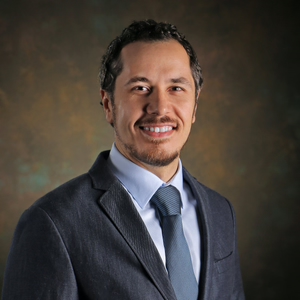
Ep. 395 Radial to Peripheral Tools and Technique with Dr. Sameh Sayfo
BackTable Vascular & Interventional
12/22/23 • 43 min
In this episode of the Back Table Podcast, host Dr. Aaron Fritts and Dr. Sameh Sayfo discuss radial to peripheral interventions, also known as R2P. Dr. Sayfo is an interventional cardiologist and the program director of the endovascular fellowship at Baylor Heart Hospital in Plano, Texas.
Dr. Sayfo points out the need for research data on the financial impact of these interventions on patients. Dr. Amit P. Amin’s work in 2017, 2018 and 2021 is highlighted for its valuable contribution in this area, specifically in the radial to coronary world. The conversation then veers into the possibilities for radial to peripheral interventions in the coming years. There’s a discussion about the potential financial impact on the healthcare system, and how radial to peripheral interventions may yield a lower length of stay and more same day discharges, which can serve as motivators for more practitioners to adopt this technology. The episode also highlights training, patient selection, complications, bailout techniques and post-procedure care related to radial to peripheral interventions.
---
CHECK OUT OUR SPONSORS
Surmodics Sublime Radial Access Platform
https://sublimeradial.com/
Reflow Medical
https://www.reflowmedical.com/
---
SHOW NOTES
00:00 - Introduction
04:40 - Discussion on Radial to Peripheral
15:52 - Addressing Hesitations about Radial Approach
25:24 - Crossing Complex Lesions: Challenges and Solutions
28:50 - Need for Research and Equipment Advancement
33:43 - Importance of Landmark Study in Radial to Peripheral
35:23 - Complications to Avoid and Bailout Techniques
40:53 - The Radial Movement and Future Prospects
---
RESOURCES
From Femoral to Radial Approach in Coronary Intervention:
https://pubmed.ncbi.nlm.nih.gov/27401210/
Intravascular Lithotripsy for Peripheral Artery Calcification: 30-Day Outcomes From the Randomized Disrupt PAD III Trial:
https://pubmed.ncbi.nlm.nih.gov/34167675/
Prospective, Multicenter Registry to Assess Safety and Efficacy of Radial Access for Peripheral Artery Interventions:
https://www.jscai.org/article/S2772-9303(23)00813-X/fulltext
Distal Versus Proximal Radial Artery Access for Cardiac Catheterization and Intervention: Design and Rationale of the DIPRA Trial:
https://pubmed.ncbi.nlm.nih.gov/33926835/
Costs associated with transradial access and same-day discharge after percutaneous coronary intervention: a systematic review and meta-analysis:
https://pubmed.ncbi.nlm.nih.gov/34258909/
The Value of Transradial: Impact on Patient Satisfaction and Health Care Economics:
https://pubmed.ncbi.nlm.nih.gov/31733737/
Transradial Access for High-Risk Percutaneous Coronary Intervention: Implications of the Risk-Treatment Paradox:
https://pubmed.ncbi.nlm.nih.gov/34253050/
Cost of coronary syndrome treated with percutaneous coronary intervention and 30-day unplanned readmission in the United States:
https://pubmed.ncbi.nlm.nih.gov/31876371/
Terumo Radial Sheath:
https://www.terumois.com/products/access/glidesheath-slender-introducer-sheath.html
Cordis Radial Sheath:
https://cordis.com/na/products/access/cardiology/rain-sheath-transradial-thin-walled-introducer
Surmodic Radial Sheath:
https://www.surmodics.com/
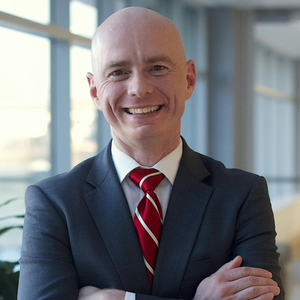
Ep. 453 Thoracentesis Best Practices with Dr. Paul Lewis
BackTable Vascular & Interventional
06/11/24 • 54 min
In this episode, Dr. Paul Lewis discusses best practices for thoracentesis. He shares insights on using image guidance, managing complex effusions, and managing complications such as pneumothorax and hemothorax. Dr. Lewis is an interventional radiologist at the University of Pittsburgh Medical Center.
---
CHECK OUT OUR SPONSOR
Laborie RenovaRP Centesis System
https://www.laborie.com/product/renovarp-products/
---
SYNPOSIS
Dr. Lewis also speaks on patient selection, procedural techniques, equipment choices, and other troubleshooting tips. Additionally, the doctors cover procedural nuances such as bilateral thoracentesis and patient positioning and highlight the efficiency of the RenovaRP Centesis System.
---
TIMESTAMPS
00:00 - Introduction
06:07 - Thoracentesis Procedure Walkthrough
16:49 - Equipment Used
22:14 - Troubleshooting
30:56 - Post-Procedural Care
36:12 - Complications
48:07 - Helpful Resources
---
RESOURCES
Prospective comparison between a peristaltic pump and vacuum containers for paracentesis: Time, resources and safety:
https://pubmed.ncbi.nlm.nih.gov/38042055/
Paracentesis: Faster and easier using the RenovaRP® pump:
https://pubmed.ncbi.nlm.nih.gov/35548901/
Society of Interventional Radiology Consensus Guidelines for the Periprocedural Management of Thrombotic and Bleeding Risk in Patients Undergoing Percutaneous Image-Guided Interventions—Part II: Recommendations:
https://www.jvir.org/article/S1051-0443(19)30407-5/fulltext
The Impact of Gravity vs Suction-driven Therapeutic Thoracentesis on Pressure-related Complications: The GRAVITAS Multicenter Randomized Controlled Trial:
https://pubmed.ncbi.nlm.nih.gov/31711990/
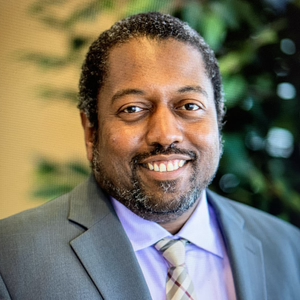
Ep. 374 Independent IR: More Than Locums, It's a Calling with Dr. Ian Wilson and Dr. Kavi Devulapalli
BackTable Vascular & Interventional
10/13/23 • 55 min
In this episode, host Dr. Dana Dunleavy engages in a thought-provoking discussion about independent interventional radiology practice with two esteemed IRs, Dr. Kavi Devulapalli and Dr. Ian Wilson. Together, they discuss the complexities and opportunities in the ever-evolving landscape of IR.
---
CHECK OUT OUR SPONSOR
Philips SymphonySuite
https://www.philips.com/symphonysuite
---
SHOW NOTES
We start off the discussion with Kavi expanding on early experiences in working a standard DR / IR split that most IRs tend to work in. He elaborates on how this split was not what he, as well as most IRs, intended to practice in when they entered the field. Thus, he then shifted over to the OBL space, a gratifying journey, but one he notes was difficult to navigate due to the intricacies. As Kavi finally transitioned to locum tenens work, he reflects on its appeal, despite the scarcity of opportunities. He notes that locum tenens work is usually in areas with an extreme dearth of IRs, such as rural areas. This conversation also explores the topic of exclusive contracts. Their impact on independent IR practices' access to hospital privileges is also explored, shedding light on the challenges faced by IRs seeking to expand their reach.
Ian then notes that his locum tenens work was also in a rural setting, and how he had served this location for an extended period of time due to their lack of retention of IRs. The discussion then reveals a growing trend among physicians, as more and more are turning to locum work due to its exclusive focus on the IR aspect of the job that initially attracted them to this field. It's a mutual demand, as physicians seeking to specialize in IR find locum work to be a well-suited avenue, while areas of healthcare dearth are equally eager to tap into the expertise of these specialists.
Both guests emphasize the urgent need for sustainable solutions to address this growing public health crisis in rural areas. This is precisely where organizations like Travelier come into play. Travelier was established by IRs, one of whom is Kavi, with a mission to bridge this critical gap by offering world-class IR services to communities with unmet needs. Their approach involves assembling dedicated physician teams and creating interventional radiology practices that generate revenue while providing viable work solutions for radiologists. This discussion is a testament to the adaptability and innovation that drive the field of IR, characterized by the commitment to improving healthcare access in areas where it is needed the most. It's also a testament to the increasing mutual demand for specialized IR services and the unique opportunities that come with it.
---
RESOURCES
Travelier:
https://travelierir.com

Ep. 460 What is POTS and Orthostatic Flow Syndrome? with Dr. Steven Smith
BackTable Vascular & Interventional
06/28/24 • 45 min
Dr. Ally Baheti interviews interventional radiologist Dr. Steven Smith about his insights into venous orthostatic flow dysfunction and its association with multisystem disorders.
---
CHECK OUT OUR SPONSOR
RADPAD® Radiation Protection
https://www.radpad.com/
---
SYNPOSIS
Dr. Smith details his clinical career and his surprising findings that connect pelvic congestion syndrome with a range of other conditions, such as postural orthostatic tachycardia syndrome (POTS), chronic fatigue syndrome, Ehlers-Danlos syndrome, irritable bowel syndrome (IBS), vulvodynia, interstitial cystitis, and fibromyalgia. For patients with venous manifestations, he pursues treatment with stents or embolization, taking a proactive approach to targeting any abnormal vasculature that he identifies.
Additionally, the podcast delves into the physiological basis of POTS and related disorders, which mainly stems from blood pooling in the lower body, leading to sympathetic overactivation. Overall, Dr. Smith emphasizes the significance of collaborating with specialists across different disciplines to advance understanding and treatment of these complex syndromes.
---
TIMESTAMPS
00:00 - Introduction
03:11 - Symptom Constellation of Venous Orthostatic Flow Syndrome
12:08 - Pelvic Vein Treatment Algorithm
21:08 - Physiology of Orthostatic Intolerance and Sympathetic Overdrive
27:11 - Patient Selection
33:27 - Need for Research and Collaboration
36:07 - Advocacy for Patients
---
RESOURCES
BackTable VI Ep. 337- Management of Vulvar Varices with Dr. Brooke Spencer
https://www.backtable.com/shows/vi/podcasts/337/management-of-vulvar-varices
BackTable VI Ep. 33- Building a Comprehensive Vein Practice with Dr. Brooke Spencer & Dr. Isabel Newton
https://www.backtable.com/shows/vi/podcasts/33/building-a-comprehensive-vein-practice
An online survey of pelvic congestion support group members regarding comorbid symptoms and syndromes (Smith et al, 2022):
https://journals.sagepub.com/doi/abs/10.1177/02683555221112567
Distension of central great vein decreases sympathetic outflow in humans (Cui et al, 2013):
https://journals.physiology.org/doi/full/10.1152/ajpheart.00019.2013
Orthostatic intolerance and chronic fatigue syndrome: New light on an old problem (Rowe, 2002):
https://www.jpeds.com/article/S0022-3476(02)53209-1/fulltext

Ep. 415 Thyroid Ablation: Efficacy, Safety, and Procedure Overview with Dr. Gary Tse
BackTable Vascular & Interventional
02/09/24 • 45 min
In this episode of the BackTable Podcast, host Dr. Chris Beck interviews guest Dr. Gary Tse about the innovative technique of thyroid ablation and its role in treating benign thyroid nodules. Dr. Tse is a practicing interventional radiologist at UCLA Health.
Dr. Tse highlights the procedural details, patient experiences, potential complications, and follow-up protocols of thyroid ablation. He emphasizes the importance of consistent communication with patients during these procedures, given that the patients are under minimal anesthesia. He explains how interventional radiologists can benefit from embracing this procedure due to their expertise in ultrasound usage, as it leads to reduction in recovery times and complications for patients. Dr. Tse also briefly discusses the future potential of thyroid embolization for larger goiters. He encourages other IR specialists to consider adopting this procedure, which he believes should become a standard of care.
---
CHECK OUT OUR SPONSORS
Siemens Healthineers
https://www.siemens-healthineers.com/
Varian, a Siemens Healthineers company
https://www.varian.com/products/interventional-solutions/embolization-solutions
---
SHOW NOTES
00:00 - Introduction
04:03 - Dr. Tse’s Career Journey and Transition to Academics
06:32 - Discussion on Thyroid Interventions
09:15 - Building Referral Patterns for Thyroid Interventions
11:50 - Thyroid Ablation Procedure Overview
21:23 - Post-Ablation Outcomes and Goals
25:52 - Avoiding Complications
32:55 - Post-Procedure Follow-Up
36:14 - Exploring Thyroid Embolization
42:23 - Final Thoughts and Future Prospects
---
RESOURCES
2017 Thyroid Radiofrequency Ablation Guideline: Korean Society of Thyroid Radiology:
https://www.ncbi.nlm.nih.gov/pmc/articles/PMC6005940/
Recurrent Laryngeal Nerve Injury in Thermal Ablation of Thyroid Nodules-Risk Factors and Cause Analysis:
https://pubmed.ncbi.nlm.nih.gov/35311971/
Effectiveness of Injecting Cold 5% Dextrose into Patients with Nerve Damage Symptoms during Thyroid Radiofrequency Ablation:
https://doi.org/10.3803/EnM.2020.35.2.407
Revisiting Rupture of Benign Thyroid Nodules after Radiofrequency Ablation: Various Types and Imaging Features:
https://doi.org/10.3803/EnM.2019.34.4.415
Thyroid arterial embolization to treat Graves' disease:
https://pubmed.ncbi.nlm.nih.gov/17354140/
Thyroid Embolization for Nonsurgical Treatment of Nodular Goiter: A Single-Center Experience in 56 Consecutive Patients:
https://www.jvir.org/article/S1051-0443(21)01212-4/fulltext#%20

Ep. 356 Digital Marketing Strategies with Dr. Eric DePopas
BackTable Vascular & Interventional
08/18/23 • 56 min
In this episode, host Dr. Aaron Fritts interviews interventional radiologist Dr. Eric DePopas about digital marketing strategies for physicians. Eric is the Co-Founder and Chief Medical Officer of Helped, a company designed to connect patients to IR physicians.
---
CHECK OUT OUR SPONSORS
Siemens Healthineers
https://www.siemens-healthineers.com/
Medtronic Ellipsys Vascular Access System
https://www.medtronic.com/ellipsys
---
SHOW NOTES
To begin the episode, Eric shares his motivations behind starting Helped and the unique story of sharing this undertaking with his brother and co-founder Kevin DePopas. He discusses his uphill battle of marketing IR services and building a strong patient base.
Eric also covers differences between digital versus in-person marketing. He emphasizes that the digital world is not a substitute for boots on the ground, and he underscores the importance of building word of mouth through strong clinical work and regularly interacting with referring physicians. Eric also shares valuable digital marketing takeaways and questions to ask marketing agencies.
Then, Eric breaks down paid-search (Google), paid-social (Facebook, Instagram, TikTok), and radio marketing strategies. Aaron and Eric discuss how to approach the bottom of the marketing funnel (where potential patients become treated patients), and how to engage and guide patients with interactive online quizzes.
Finally, the doctors examine the value of customer relation management systems (CRMS). Eric explains how CRMS is a high fidelity approach to assessing patient knowledge and how it is a key component in building a truly robust funnel. The episode concludes with Eric giving parting advice and encouragement for physicians in the marketing world.
---
RESOURCES
Helped Website:
https://www.tryhelped.com/patient-home
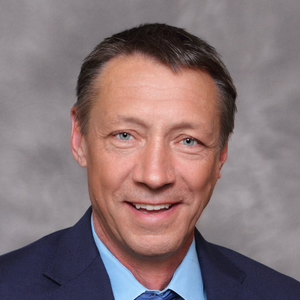
Ep 254 Who is SIO? Past, Present and Future of Our Society with Drs. Bill Rilling, Sarah White, and Sean Tutton
BackTable Vascular & Interventional
10/24/22 • 39 min
In this episode, guest host Dr. Sean Tutton interviews Dr. Bill Rilling and Dr. Sarah White about the history of the Society of Interventional Oncology (SIO), their current research and volunteer involvement, and future directions of the society.
---
CHECK OUT OUR SPONSOR
Varian, a Siemens Healthineers company
https://www.varian.com/
---
SHOW NOTES
We begin by discussing how the Society of Interventional Oncology (SIO) began. It started as the World Conference of Interventional Oncology (WCIO), but was formed into an official society with the goal to become the fourth pillar of oncology care, in addition to surgical oncology, medical oncology and radiation oncology. At the time of its inception, the group asked themselves whether interventional oncology would be bettered by the addition of a professional membership society, and there was a thoughtful and unified decision that it would be.
Next, we discuss what goes into forming a society? When asking people to become members, pay money and give their time, they will expect some return on their investment. It's important to have a formal society, as it greatly advances the field forward. The ability to focus resources and effort completely on what you're passionate about is what having SIO allows. At SIO, we want people to be members of both SIR and SIO, it should be both, not one or the other.
Finally, we talk about some of the current research funded by SIO. SIO fulfills the research aspect of the society by creating data, currently via the Ablation with Confirmation of Colorectal Liver Metastasis (ACCLAIM) Trial. This trial uses software to determine post-treatment margins in percutaneous microwave ablation for colorectal metastasis of the liver. With this trial, they hope to prove that this procedure results in high rates of clear margins, which will make it a minimally invasive alternative to surgical resection. Future research efforts will likely focus on coupling locoregional therapy with targeted immunotherapy. They aim to start treating new cancers, develop further partnerships with industry and pharma, and continue to produce quality data on response rates to promote interventional oncology as the well respected and accepted fourth pillar of oncology.
---
RESOURCES
SIO:
www.sio-central.org
ACCLAIM Trial:
www.sio-central.org/p/cm/ld/fid=809
Show more best episodes

Show more best episodes
FAQ
How many episodes does BackTable Vascular & Interventional have?
BackTable Vascular & Interventional currently has 511 episodes available.
What topics does BackTable Vascular & Interventional cover?
The podcast is about Health & Fitness, Medicine, Podcasts and Education.
What is the most popular episode on BackTable Vascular & Interventional?
The episode title 'Ep. 155 The Butterfly Story: An Interview with Dr. John Martin' is the most popular.
What is the average episode length on BackTable Vascular & Interventional?
The average episode length on BackTable Vascular & Interventional is 46 minutes.
How often are episodes of BackTable Vascular & Interventional released?
Episodes of BackTable Vascular & Interventional are typically released every 3 days, 23 hours.
When was the first episode of BackTable Vascular & Interventional?
The first episode of BackTable Vascular & Interventional was released on Apr 10, 2017.
Show more FAQ

Show more FAQ